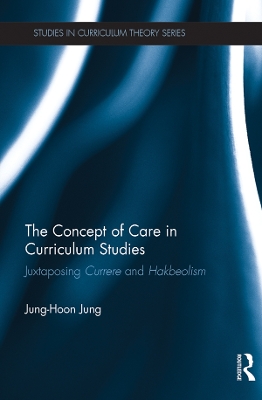Studies in Curriculum Theory
1 primary work • 2 total works
Book 38
The question at the heart of the book is what might an education with self-care and care-for-others look like? Juxtaposing self-understanding through the method of currere and the historical character of hakbeolism (a concept indigenous to Korea referring to a kind of social status people achieve based on a shared academic background), this book articulates how subjective reconstruction of self in conjunction with historical study can be transformative, and how this can be extended to social change. Articulating how having one's own standard can be a way of making one's life a work of art, the author looks at how Korean schooling exercises coercive care, disconfirmation, and the "whip of love" for the children's own good. Emphasis is given to the internalized status of these practices in both students and teachers and to teachers' and parents' culpability not only in exercising but also in reproducing these practices through themselves.
Going beyond describing and analysing the educational problem of academic (intellectual) achievement-oriented education based on aggressive competition, this book suggests ways to address these issues through autobiography (using the method of currere to reconstruct one's subjectivity) and an ethic of care.
Theorizing Shadow Education and Academic Success in East Asia
by Young Chun Kim and Jung-Hoon Jung
This volume tackles perceived myths surrounding the academic excellence of East Asian students, and moves beyond Western understanding to offer in-depth analysis of the crucial role that shadow education plays in students’ academic success.
Featuring a broad range of contributions from countries including Japan, China, Taiwan, and Singapore, chapters draw on rich qualitative research to place in the foreground the lived experiences of students, teachers, and parents in East Asian countries. In doing so, the text provides indigenous insights into the uses, values, and meanings of shadow education and highlights unknown cultural and regional aspects, as well as related phenomena including trans-boundary learning culture, nomadic learning, individualized learning, and the post-schooling era. Ultimately challenging the previously dominating Western perspective on shadow education, the volume offers innovative theorization to highlight shadow education as a phenomenon which cannot be overlooked in broader discussion of East Asian educational performance, systems, and policy.
Offering pioneering insights into the growing phenomenon of shadow education, this text will benefit researchers, academics, and educators with an interest in international and comparative education, curriculum studies, and East Asian educational practices and policy. Those interested in the sociology of education and educational policy will also benefit from this book.

